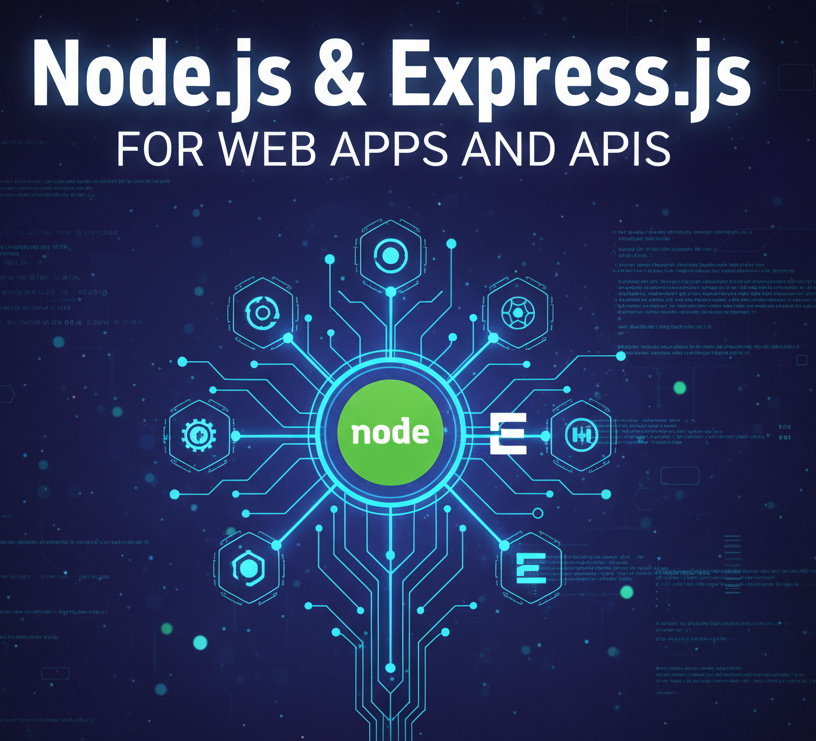Free course on palindrome in python
Palindrome in Python
Master palindromes in Python with this concise course module! Learn to create and recognize reversible strings through hands-on exercises and clear guidance.
Instructor:
Ms. Sampriti ChatterjeeAbout this course
In this course, you will learn about Palindrome in python. You will start this course by learning the basic concepts of python programming such as its syntax, variables, data types, operators, tokens and string.Then we will jump to control statements such as if, if-else and loops. Then, moving ahead you will get the idea about a palindrome which is defined as a word, phrase, number and on reading gives the same, backward as forward. Lastly, you will be seeing the practical implementation of palindrome number as well as string using loops and functions along with palindrome in the linked list.
Explore our Software Engineering Courses today.
Course outline
Variables and datatypes in python
Introduction to Python
This module starts by briefly introducing Python programming, and you will go through its installation process and some essential hands-on examples.
Installing Python
This section will demonstrate how to install Python with step-by-step explanations. You can follow the steps to install it on your PC.
Operators in Python
Python have three operator types: relational, arithmetic, and logical. The tutor will help you better understand these operators with the help of some examples in Python.
Tokens in Python
This section will brief you about four different tokens in Python, starting from keywords, and continuing with identifiers, literals, and operators with demonstrated code snippets.
Get access to the complete curriculum once you enroll in the course
Our course instructor

Ms. Sampriti Chatterjee
IT & Software Expert
Frequently Asked Questions
Will I receive a certificate upon completing this free course?
Is this course free?
What is the longest palindrome word in the English language?
As per the Oxford English dictionary, the longest palindromic word is the 'onomatopoeic.' It was invented by James Joyce in Ulysses in 1922.
Is palindrome in python worth learning in 2021?
Yes, palindromes in python are worth learning in 2021. Palindrome detection is a basic program involving numeric and string operations. It involves string slicing, string parsing, etc. It also involves learning modulo and integer division operations. One also has to learn if…else conditions and while loop.
Will I have lifetime access to this free Palindrome in Python course?
Yes, once you enroll in the course, you will have lifetime access, where you can log in and learn whenever you want to.
Other IT & Software tutorials for you
Palindrome in Python
Reasons To Adopt Python
Python is super easy to learn, code, understand, and debug: Python language is pretty easy to learn, code, understand, and debug for anyone new to the field. The python language is open source, heavily adopted, and highly documented. It has a simple syntax that is closer to natural language. All these reasons make Python codes easy to write and ensure that it is much faster than other programming languages such as Java.
Python is an interpreted language: Since Python is interpreted, one can also quickly experiment by changing the code base of Python and find errors line by line instead of compiling the entire program as in the case of C.
Ever-increasing Python community that is very mature and supportive: The Python community has grown over the last 30 years. There is plenty of documentation, guides, and video tutorials for Python language that is available for any learner and developer of any skill level or age can use and receive the support required to enhance their knowledge in the Python programming language.
Many universities teaching undergraduate computer science courses introduce computer science only through Python language. Most of the research students code their research projects in Python. The Python community has its doors open for anyone who wants to learn this language. The Python developer community is a very active programming language community.
For any issue with Python language, you can get instant support from developers of all levels ranging from beginner to expert in the community. Getting help on time plays a vital role in the development of the project, which otherwise might cause delays.
Endorsement from Renowned Corporate Sponsors: Any programming language grows faster when a corporate sponsor backs it. For example, PHP is backed by Facebook; Java is backed by Oracle and Sun; Visual Basic and C# are backed by Microsoft. Facebook, Amazon Web Services, and Google have backed up Python.
Google adopted the python language in 2006 and has invested huge amounts of effort, time, and money in the training and success of the python language by Google. The list of support tools and documentation keeps on growing for python language in the developers’ world.
Ever-growing rich set of Python Libraries and Frameworks cutting across domains: For any domain, Python has a well-tested and supported library that you can use to select and save your time and effort on the initial cycle of development. There are also lots of cloud media services that offer cross-platform support through library-like tools, which can be extremely beneficial. For instance, for natural language processing, one can use Spacy, nltk, or textblob. For machine learning-based tasks, one can use scikit-learn or TensorFlow. Some popular Python libraries/frameworks are as follows:
-
Matplotlib for plotting charts and graphs
-
SciPy for engineering applications, science, and mathematics
-
BeautifulSoup for HTML parsing and XML
-
NumPy for scientific computing
-
Pandas for data processing
-
JSON for JSON Processing
-
Django for server-side web development
-
Moviepy for video processing
Python is versatile, efficient, reliable, and fast: Python language is efficient, reliable, and much faster than any of the modern languages. Python can be used in nearly any kind of environment without any performance loss as compared to any other programming language. Python can be used to develop a variety of applications such as mobile applications, desktop applications, web development, backend scripts, middleware, recommendation engine, hardware programming, and many more.
Seamless integration with cutting edge technologies: Python is effortlessly integrated with new-age technologies such as Big data, Machine Learning and Cloud Computing, neural networks, and artificial intelligent systems. Python language, together with R language, forms the backbone for any data science and analytics project. Most of the data processing workloads in the organization are powered by python language only. Most of the research and development takes place in python language due to its many applications, including ease of analyzing and organizing the usable data. A huge number of python libraries are being used in thousands of machine learning projects every day, such as TensorFlow for neural networks, SciPy for scientific computing, OpenCV for computer vision, etc.
Python is highly agile and flexible: The python language is highly flexible, agile, and robust. A new developer can effortlessly try something new such as solving a string manipulation problem using an in-built function or using list slicing. There is no restriction from language semantics, and Python doesn’t restrict any sort of application development. This kind of freedom and flexibility is not seen in other high-level programming languages.
Python is the second name for automation: Python language is not only used as a programming language but is also used as a scripting language to automate day-to-day DevOps tasks such as cleaning disk space, clearing log files, triggering CI/CD pipeline to initiate a client build, etc. Python has lots of tools and modules that make things much more comfortable for automation. One can build an advanced level of automation suite easily by just using necessary python codes in quick time. Python is heavily used in the automation of software testing since it boosts performance big time. It not only decreases code footprint but also cuts down the testing cost, maintaining redevelopment cost.
Python in a nutshell
-
Python is highly readable and effortlessly understandable
-
Python supports modules advocating code reuse.
-
Python is a cross-platform language with the motto "code once, reuse many times at many places"
-
Python is an interpreted language.
-
Python is fully Open-source.
-
Python has an ultra-rich set of standard libraries that allows integration with other high-level languages such as Java, C, and C++.
-
Python supports object-oriented programming
Application of Python
-
AI and Machine Learning.
-
Data Analytics
-
Scientific Computing
-
Data Visualization
-
Programming applications
-
Web Development
-
Game Development
-
Natural language Development
-
Review and recommendation system
-
Financial model
-
SEO techniques
-
System Design
Advantages of Python
-
Modular and structural
-
Suitable for procedures
-
Both low level as well as high level
-
Powerful and efficient language
-
Portable and robust language
-
Huge repository of Built-in functions
-
High extensibility index
-
Ideal to implement any algorithm using any data type(s)
-
Implements Dynamic memory allocation
-
Structure of a typical C program
Best path to learning Python
The best way to learn Python is to code-related problems of what you read daily. Install a good Python IDE and start coding as you learn. Great Learning offers many free online courses on different topics of Python, data science, machine learning, and programming in general. Remember that if you are a non-programmer, you will take longer to learn, and hence you have to be more patient. You can think of a small application such as a graphical calculator and start coding it as you learn various concepts around it. While coding, you will surely get an error, and that implies that you are going in the right direction. Every error should teach you something and prompt you to find the solution. Remember that the best learning is through errors and exceptions.
You can always take a reputed online course (from Great Learning off course!) to start your Python journey. As a small tip, you should first read through the syntax without spending too much time on it. The best way to master syntax is to have a project set up with an IDE like PyCharm and start coding on it.
Keywords in Python
In every language, certain words are part of the language’s internals and are forbidden to use by the programmer. These words are intrinsic to the language and are kept reserved for doing a specific task or having a specific purpose or meaning in the context of the language. These words are known as reserved words or keywords. These words are predefined and always written in lower case or small letters. These keywords cannot be used as a variable name. Some examples are False, if, await, else, import, pass, None, return, try, while, break, except, class, in, True, raise, except, finally, is, in, and, continue, for, lambda, def, from, try, as, global, nonlocal, while, elif, if , async, assert, insert, del, not, with, or, yield, etc.
Advanced libraries in Python
Some advanced libraries in Python are as follows:
-
Numpy
-
Pandas
-
Scikit-learn
-
Tensorflow
-
Keras
-
SciPy
-
Stasmodels
-
Plotly
-
MatplotLib
-
Gradio
-
Seaborn

 4.65
4.65









.jpg)















.jpg)
.png)









.png)





.jpg)
.jpg)
.jpeg)
.jpg)
.png)


.png)
.jpg)
.jpg)
.png)




.png)
.png)
.png)
.png)
.png)





 (1).png)
.png)
.png)

.png)
.png)
 (1).jpg)
.png)
.png)
.png)







.jpg)




.jpg)



